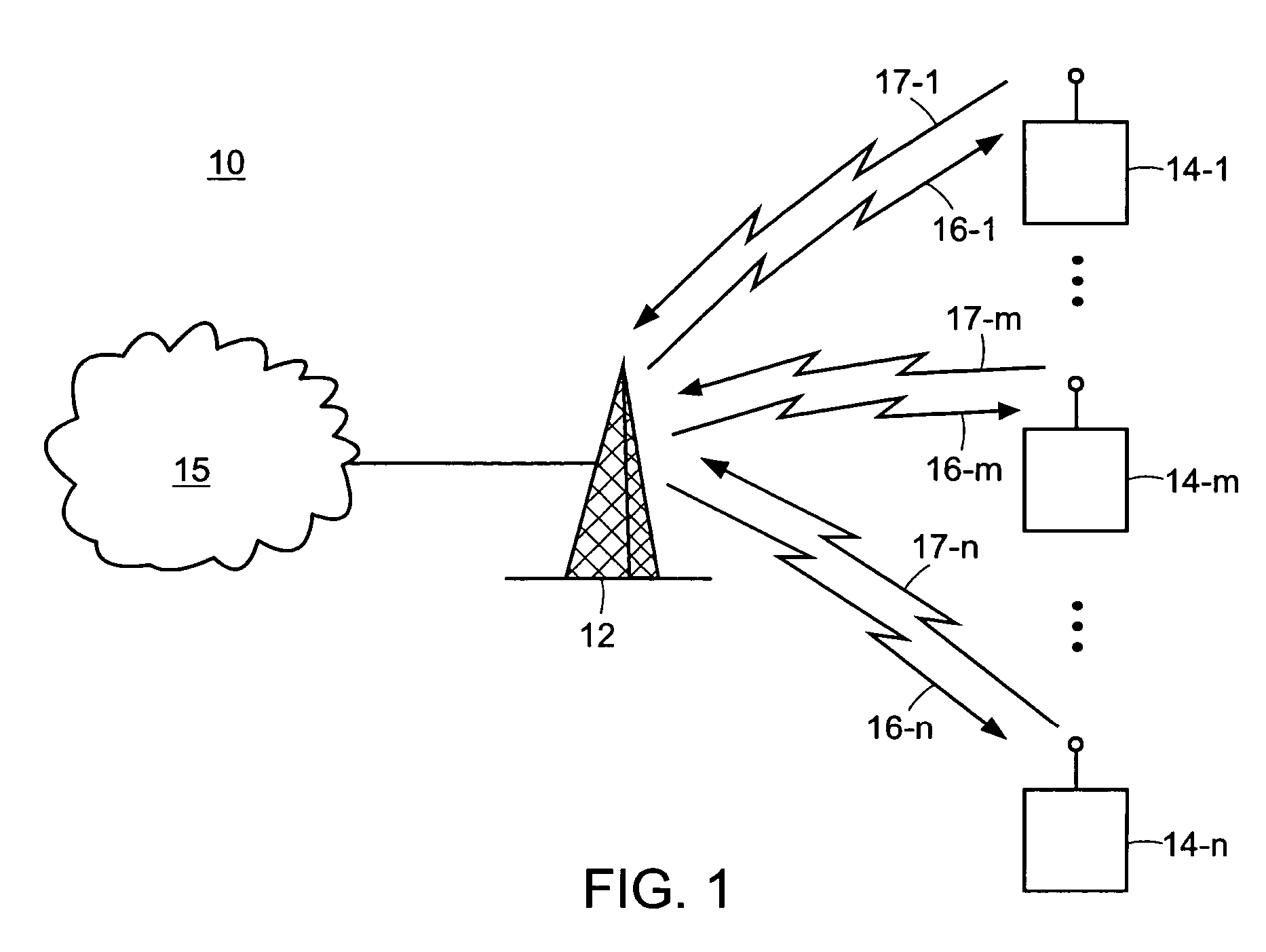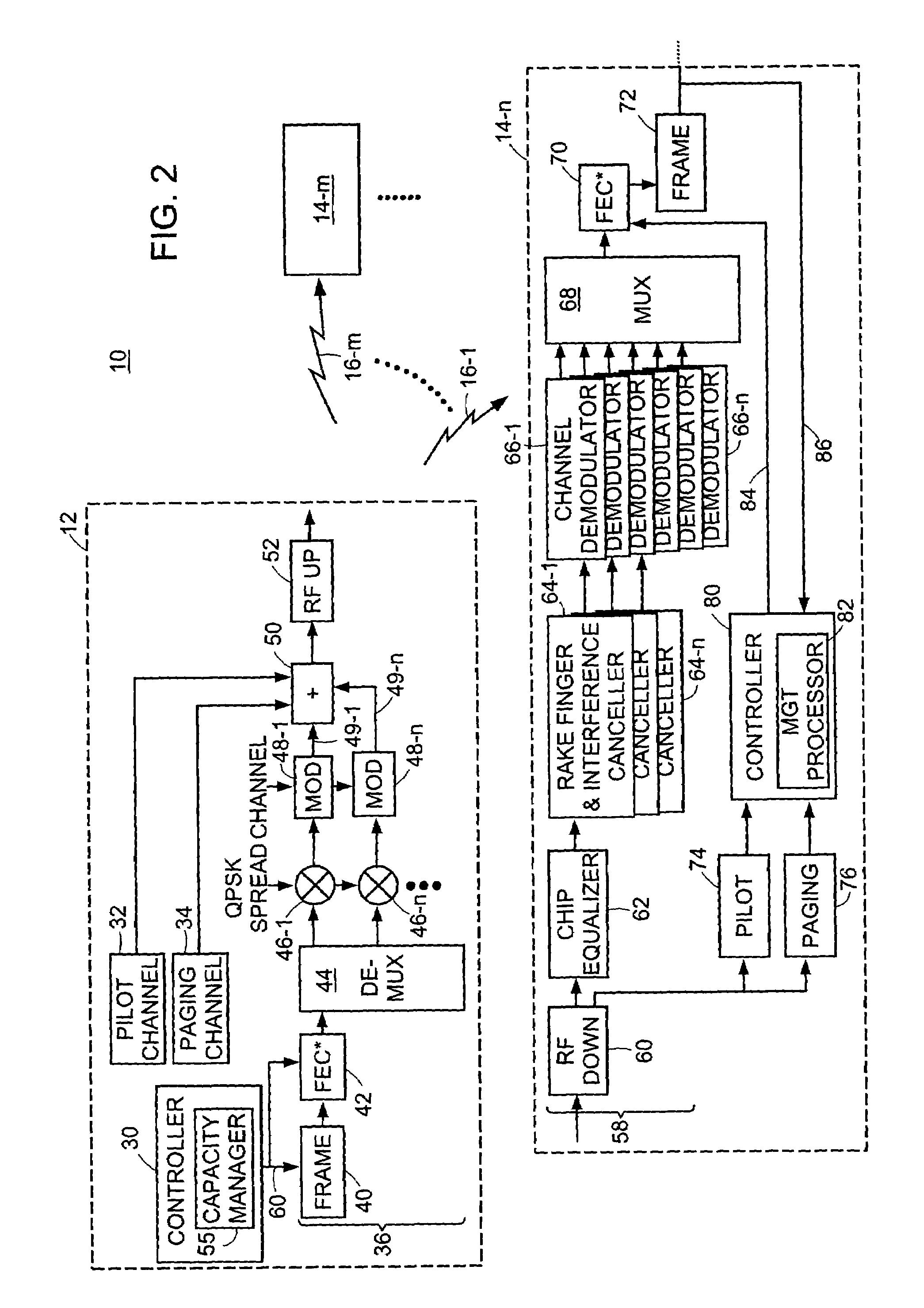Variable rate coding for forward link
a forward link and variable rate technology, applied in the field of wireless communication systems, can solve the problems of channel interference increasing, forward link direction presenting a different problem, and subscriber units may interfere with another signal in an unpredictable way
- Summary
- Abstract
- Description
- Claims
- Application Information
AI Technical Summary
Benefits of technology
Problems solved by technology
Method used
Image
Examples
Embodiment Construction
[0019]Turning attention now to the drawings more particularly, FIG. 1 is a block diagram of a system 10 for providing high speed data service over a wireless connection such as, for example, a digitally modulated wireless service known as Code Division Multiple Access (CDMA). The system 10 consists of one or more base station processors 12 and multiple subscriber access units 14-1, . . . , 14-n, . . . , 14-m (collectively access units 14). FIG. 1 illustrates one base station 12 and three access units 14 by way of example only and for ease of description of the invention. The invention is applicable to systems in which there are typically many more subscriber units communicating with one or more base stations.
[0020]The access units 14 provide wireless data services and can connect devices such as, for example, laptop computers, portable computers, personal digital assistants (PDAs) or the like, through base station 12 to a network 15 which can be a Public Switched Telephone Network (...
PUM
 Login to View More
Login to View More Abstract
Description
Claims
Application Information
 Login to View More
Login to View More - R&D
- Intellectual Property
- Life Sciences
- Materials
- Tech Scout
- Unparalleled Data Quality
- Higher Quality Content
- 60% Fewer Hallucinations
Browse by: Latest US Patents, China's latest patents, Technical Efficacy Thesaurus, Application Domain, Technology Topic, Popular Technical Reports.
© 2025 PatSnap. All rights reserved.Legal|Privacy policy|Modern Slavery Act Transparency Statement|Sitemap|About US| Contact US: help@patsnap.com



